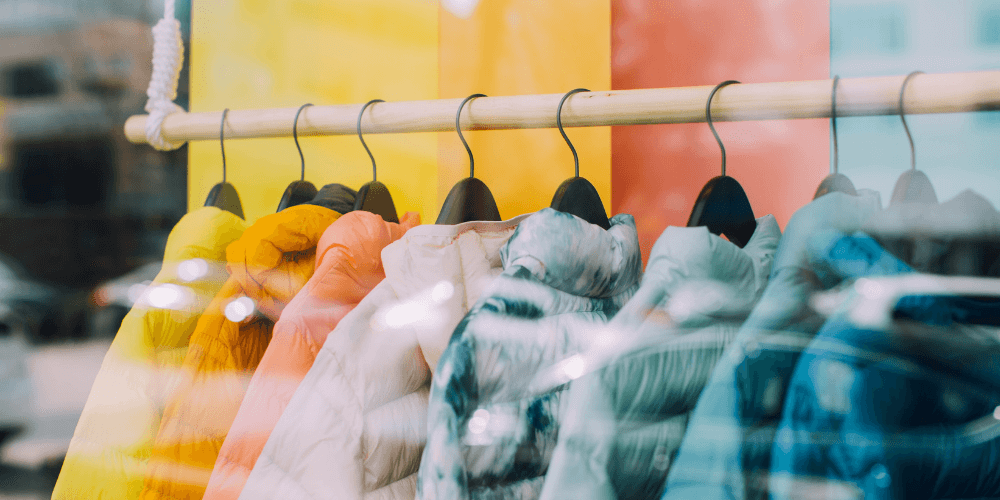We are in the midst of a digital transformation. It’s not over yet and it’s not something still to come; it’s happening here and now.
As the pandemic pushed nations into lockdown and already ailing highstreets were forced to close, traditional retailers came under more pressure than ever to adapt to a new order. With real world shopping off the menu and real life customer service shelved for the foreseeable, heritage brands had to act quickly to replicate the positive consumer experiences they’d previously offered in-store, online.
However, while this opportunity might have proven invaluable in the face of a global health crisis and its curtailment of normal life, it has also created a hyper-competitive marketplace, one in which digital natives and digital transformers must compete side by side.
We talked to Sam Foroozesh, CEO and Co-Founder of Cure Media, to get his take on what this shift means specifically for fashion retailers.
Exploring fashion’s digital transformation
The pandemic has presented a real struggle for traditional retailers, but the high street was under threat even before. What’s behind that?
For a long time, traditional retailers have relied on tactics that were most effective decades ago; they bought billboards in areas of maximum foot traffic, and would spend exorbitant sums to make sure they had physical stores on major high streets and in popular shopping centres.
But as the online world has grown and the capabilities of eCommerce have become smarter, people have recognised the peak convenience offered by online shopping, and as a result are often choosing it in favour of heading out to visit real world outlets.
This challenge has been compounded by a new era of brands entering the fray. While traditional retailers have stuck to traditional retail tactics, digital native brands have swooped in to capitalise on this new mode of business and cater to a new type of shopper, thereby increasing not just the number of brands competing for every individual’s attention, but also the standard of service they expect.
So having an online store is a non-negotiable nowadays, but is that all that fashion brands need to consider?
Obviously the mechanics of a transaction are important, whether that’s a seamless checkout process or a pain-free returns policy—how the day-to-day of your digital shop front operates, basically. But what brands might be in danger of missing is that the consumer journey starts long before they reach the point of payment, even before they necessarily reach your site.
Window shopping has always been an important part of purchasing decisions and nothing has changed there except for how we do it.
The most popular destinations when you need a bit of wardrobe inspiration used to be Oxford Street or 5th Avenue or maybe Champs-Élysées avenue—today it’s sitting in the palm of your customers’ hands.
And that goes beyond a brand’s online shops?
Absolutely! Like we discussed, owned sites are definitely important and brand social channels perhaps even more so. However, it’s important to remember that trust in brands is low for modern consumers. So while you obviously do need your owned channels, they come much later in the decision making process for today’s shoppers. Instead, when shoppers are right at the top of the funnel, perhaps not even clear on what they want yet, that’s when they look to their peers on social media for inspiration, and that means friends and family, of course, but also influencers.
How have we seen brands respond to this?
Well up until now, the approach has been very sales-centric. We’ve seen lots of short term activations and one-off ads, often with really big accounts like mega-influencers or even celebrities. By adopting this style of influencer marketing, brands were generally able to at least count on that momentary hype: people would buy into that one product or offering… but then they would usually quickly move on to the ‘next big thing’.
Now, in an arena as competitive as the modern eComm one is, I would be surprised if brands even reliably enjoy that short-lived peak, as there’s simply too much noise for them to be heard if they’re only shouting once in a blue moon. It’s simply not sustainable as a stand-alone tactic and won’t get retailers the kind of value or ROI that they need if they’re going to compete in such a saturated marketplace.
So what’s the alternative?
Instead, brands should really be looking at social media and influencer marketing as brand-building opportunities. Take the focus away from turning a quick buck, and reinvest that energy and those resources into longer term initiatives and partnerships that are going to offer continued returns and will build a loyal consumer base over time.
The reality is that basically every brand can offer consumers smooth online shopping experiences and a social media presence to some extent—these are basic requirements for survival nowadays, not necessarily success. What’s going to make your brand stand out is how good you are at building relationships with your audience over time and via the people they trust.
As in-person shopping experiences become less and less the default, brands need to find a different way to cater to their prospective customers. If it’s not already, it will soon be the digital interpersonal connections you build that ultimately influence someone to spend their cash with you rather than move on to your nearest competitor.
Want to learn more? We sat down with the CEO of Kappahl, one of Scandinavia’s largest fashion retailers, to get her take on how consumer habits are changing.


